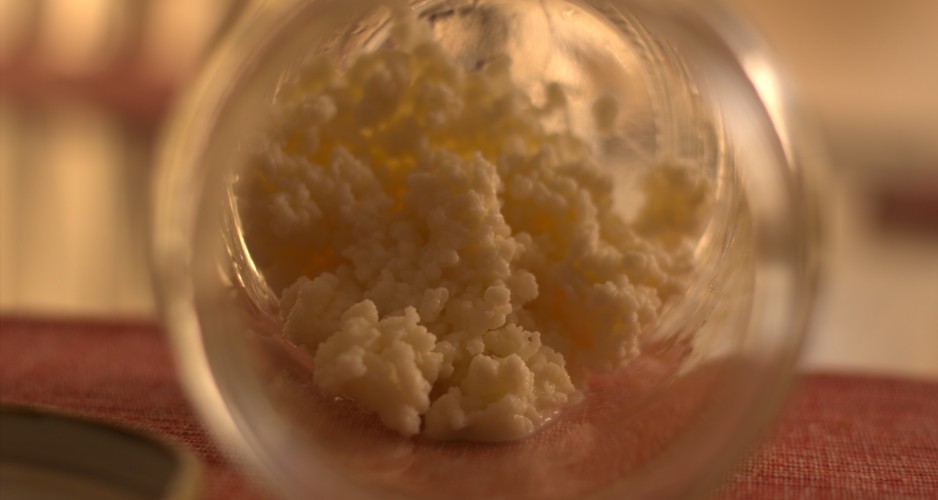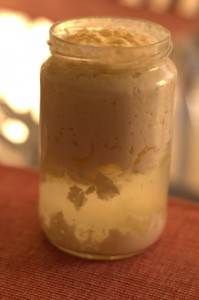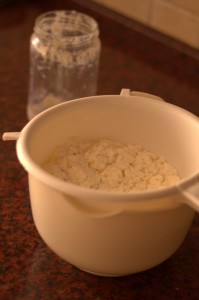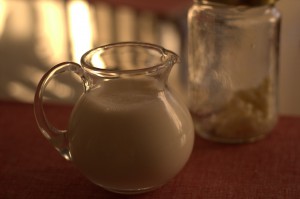After reading this post you will probably think that my website should have been called “Kefirfique”. That would be because I am not hiding my obsession with this amazing grain. I can guarantee that you will love having kefir at home – not only because taking care of kefir grain is super easy but also, for its multiple uses.
The word “kefir” is derived from the Turkish word “keyif“, which means “feeling good” when translated to English. This is likely due to the fact that people who consume kefir often claim to be in good health and live long lives.
Milk kefir is a fermented milk product made by placing kefir grains into milk and allowing the bacteria and yeasts in the grains to ferment the milk. To make milk kefir you can you use milk of any animal (cow, goat, sheep..) as well as coconut, almond, soy and other plant based milks. However if you use a vegan milk you need to “recharge” the grains in animal milk occasionally.
Concerning the consitency, kefir falls somewhere between yoghurt and milk. It has a tangy, slightly sour taste with a mild tingling sensation. The longer you let milk to ferment the more intense the tingling sensation becomes.
Some of the many nutrients found in milk kefir are calcium (20% of your daily recommended value in one serving), carotene, copper, iron, magnesium, protein, vitamines (A,C,D,E,B2,B6, B12, K2), zinc, etc. The proteins in kefir are predigested, meaning they are partially broken down during fermentation. This makes proteins that are difficult to digest more accessible to the body. People who have difficulty digesting casein (protein found in milk) may be able to tolerate milk kefir due to the predigestion that takes place during fermentation. Another ( a bit odd) feature of milk kefir is that even though it is full of probiotic bacteria, it has strong antibiotic properties.
Kefir grains range in size from tiny specks to a few centimeters in diameter and have irregular surface that looks like a cauliflower florets. These grains spread quite fast and therefore you only have to get them once – when dried and store properly they can last a long time even without milk.
In case you would like to know more about kefir grains I recommend getting a book about Milk Kefir written by Meghan Grande (Fermented Foods vol. 2: Milk Kefir) which is the second book of The Food Preservation Series of this author. The information in this post are from this book as well.
How to make milk kefir
Ingredients and tools:
– kefir grains (you can start with just one tea spoon of kefir grains)
– fresh milk
– glass jar
– plastic or stainless steel sieve or strainer
– wood or plastic spoon
Method:
1. Place the kefir grains into a jar (0,7 l ) and pour fresh milk into the jar as well
2. Cover the jar and let it sit at room temperature for 24 hours or more. The longer you let it sit the stronger the taste of the kefir will be. I like more intense taste so I usually let it sit for at least 48 hours. The speed of fermantation depends also on the temperature – the warmer the temperature, the faster the fermentation process.
3. After 24 hours (or more) strain the kefir grains out of the milk. Discard the milk and return kefir grains to the jar. Repat the step 1. If the grains get too slimy you can wash them in filtered water.




